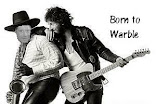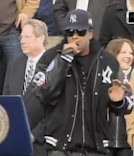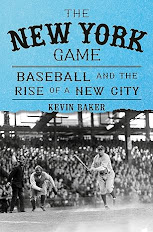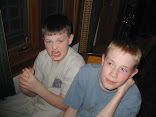From the not-yet-mathematically-eliminated computer of HoraceClarke66...
Aroldis Chapman’s epic fail against the Angels—not to mention his epic fail a week ago, when he walked in the tying run against the Royals, his epic fail this past month with a 6.55 ERA, his epic fail last year when he surrendered the season-ending home run to Tampa Bay’s Jacques Cousteau, his epic fail when he surrendered the home run to end the 2019 season against Houston with the great Jake Marisnick on deck, his epic fail in Boston to end the 2018 pennant race, and his epic fail in losing Game Two of the 2017 ALCS to Houston—gasps, pants, pauses for breath—leads us to one, inescapable conclusion:
Brian Cashman has at last got himself his very own Armando Benitez (not counting the time he actually signed Armando Benitez).
How did this happen? Oh, there are many conjectures and theories. Not to mention how some of us wanted Brain to sign The Cuban Missile when he first defected from Castro’s Socialist Paradise before the 2010 season, and when he was much younger, much better, and much cheaper.
Such a signing might have won us 3 more titles, in 2010-2012. But I’m talking a much deeper dive than that. How did we get into this mess? I think we have to go back, back, to the very start of Yankees relief pitching…
No, the Yankees did not invent relief pitching, as many believe. That honor belongs to Firpo Marberry of the 1920s Washington Senators, who became the first guy who was not a grizzled, dead-armed, alcoholic veteran to work regularly out of the pen.
(Why “Firpo”? Don’t ask. Luis Firpo, “the Wild Bull of the Pampas,” the great heavyweight contender who knocked Jack Dempsey out of the ring and inspired the immortal painting by George Bellows was also a favorite of the era. Let’s face it: Americans in the 1920s were just crazy for hot jazz, flagpole sitting, bootleg hooch, and Firpos. But I digress.)
It was the Yankees, though, who
quickly turned relief pitching into a regular part of their arsenal.
This all started when the Yanks’ tough-as-nails GM, “Cousin Edgar” Barrow—Don’t ask why he was called “Cousin Edgar.” Just be glad his nickname wasn’t “Firpo.”—was thumbing through the pages of The Sporting News, the racist, anti-Semitic “Bible of Baseball,” and he happened to notice that a pitcher named William Wilcy Moore was in the midst of going 30-4 for Greenville in the Class-B Sally League, back in the days when the minor leagues still had cute nicknames or, you know, names.
Cousin Edgar promptly sent a
scout down to Greenville, who reported that the club wanted $3,500 for Moore,
who they claimed was 30 years old. The scout advised against it. He wasn’t
impressed by Moore getting all those batters out, and thought he was older than
30.
“I don’t care,” Barrow claimed he told the scout. “Anybody who can win that many games even in the Epworth League is worth what they’re asking for him.”
“The Epworth League!” Oh, what colorful, impenetrable ways they had of expressing themselves in the 1920s!
Moore was indeed 30 years old it turned out, his face just weathered from his lifelong, offseason profession growing cotton in Oklahoma. He had bumped around the minors for years with little success, until he had the good fortune to be hit by a batted ball, breaking his pitching arm. It was not set well and hurt when Moore tried to go back to throwing overhand. As a result, he developed a marvelous, sidearm sinker.
(Old timey baseball is full of
players who fared suspiciously well after they were mangled doing one thing or
another in our dangerous old industrial economy. Red Ruffing lost a couple toes
in a mining accident, turning him from an outfielder into a pitcher, while
Three-Finger Brown’s career was made when he lost a couple fingers to a wheat
thresher. Could it have been that youths all over America were experimenting
with self-mutilation just so they could get out of whatever awful,
life-threatening work they doing and go play baseball?)
Anyhoo, Wilcy Moore later recalled that he was just about to pack it in and go back to his cotton farm when word came that he was going to New York.
“I was saying goodbye to my teammates,” he remembered. “…I decided I might as well see how they play in the majors, so I went.”
This recollection is a little dubious, seeing as how the Yanks signed him in February of 1927. Perhaps he mistook the family mules for his teammates.
But off to New York it was, where manager Miller Huggins eagerly worked him like the dirt-cheap busher he was, starting him in 12 games and bringing him on in relief 38 times more, for a total of 213 innings.
To everyone’s amazement, Moore pitched like he was still in the Sally League. As a starter, he threw 6 complete games and a shutout. As a reliever, he led the AL with 13 saves, and overall he went 19-7 with a league-leading 2.28 ERA. In the Yanks’ World Series sweep, he surrendered just one earned run in 10 2/3 innings, picking up another save and a complete-game win that ended the Series.
By the end of the season, they were calling Wilcy, “Cy,” and indeed, had there been a Cy Young Award that year, he would’ve won it.
As it happened, Cy went back to his farm—and fell off his barn while trying to fix the roof. His arm was never the same again, for whatever reason, but he did lead the AL in saves in 1928 and 1929. After bouncing down the minors and up—sort of—to Boston, he found his way back to the Yanks in 1932, where he saved 4 games down the stretch and won 2 more.
In the World Series that year—famed for Ruth’s called shot—Moore pitched 5 1/3 innings of two-hit, shutout relief, to win the fourth and final game. He stayed in the game until 1940, before going back to the wonderful world of cotton farming.
What does this have to do with the woes of Aroldis Chapman? Keep watching this space!












































4 comments:
This is better than great. I want part 2!!
Incidentally, Moore and his wife had three sons and a daughter. They named their middle son, who was born in 1930, Cy.
I really want the world to know about this great man who brought back happiness into my life again after my husband left me and the kids 3 years ago for another women online when i contacted Dr Believe he cast a love spell for me within 48 hours my ex husband start calling me and begging for forgiveness for everything that have happened between us. I was so happy to have my family back together with love again here is the email of Dr Believe via believelovespelltemple@gmail.com a man with the great powers you can also call him or add him on Whats-app: +2348156148821
God bless you
I am very grateful for your help in my marriage.
LOTTO, lottery,jackpot.
Hello all my viewers, I am very happy for sharing this great testimonies,The best thing that has ever happened in my life is how I win the lottery euro million mega jackpot. I am a Woman who believe that one day I will win the lottery. finally my dreams came through when I email believelovespelltemple@gmail.com and tell him I need the lottery numbers. I have spend so much money on ticket just to make sure I win. But I never know that winning was so easy until the day I meant the spell caster online which so many people has talked about that he is very great in casting lottery spell, . so I decide to give it a try.I contacted this great Dr Believe and he did a spell and he gave me the winning lottery numbers. But believe me when the draws were out I was among winners. I win 30,000 million Dollar. Dr Believe truly you are the best, all thanks to you forever
Post a Comment